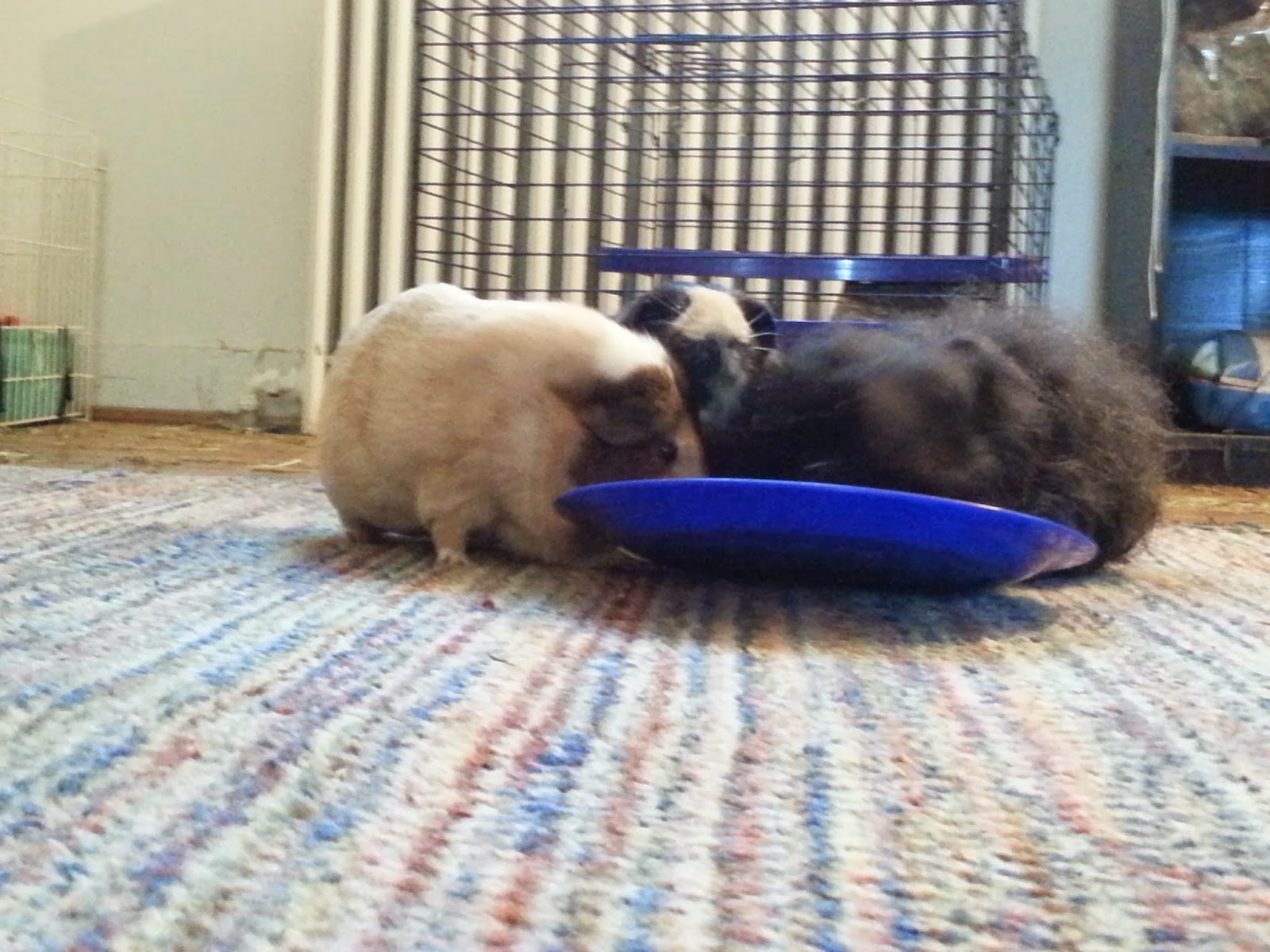 |
| What kind of water am I drinking? Read on to find out! |
In addition to figuring out what kind of water bottle to get (which
we struggle with to this day), guinea pigs should also talk to their humans about what kind of water to put in the bottle. There are a few options available when it comes to water:
1.
Tap water - One of the big concerns with tap water is hard water.
Hard water is "water that has high mineral content... Hard water is formed when water percolates through deposits of calcium and magnesium-containing minerals such as limestone, chalk and dolomite." We've heard it claimed that
hard water can cause sludge in guinea pigs;
bladder sludge is a collection of "gritty calcium-based particles that collect in the bladder." Microorganisms are another concern, which can be reduced or eliminated
by boiling water, although this wouldn't eliminate the hard water deposits, and may even concentrate them in the remaining water. Certain areas have better water quality than others, however. We've heard it claimed that
Iceland has some of the best tap water, while many other countries like Afghanistan have
poor-quality tap water. Even within the United States, there are plenty of examples of bad tap water. For example,
Pensacola, Florida is said to have the worst water quality in the country: "Of the 101 chemicals tested for over five years, 45 were discovered. Of them, 21 were discovered in unhealthy amounts. The worst of these were radium-228 and -228, trichloroethylene, tetrachloroethylene, alpha particles, benzine and lead. Pensacola's water was also found to contain cyanide and chloroform." You don't want that in your water bottle! If you're not absolutely certain that your tap water is safe, you're better off looking into other options.
2.
Bottled water -
According to the Natural Resources Defense Council (NRDC), "No one should assume that just because he or she purchases water in a bottle that it is necessarily any better regulated, purer, or safer than most tap water." As part of a four-year study they did, the NRDC sent 1,000 bottles of bottled water for lab testing, and found: "that most bottled water tested was of good quality, but some brands' quality was spotty. About one third of the bottled waters we tested contained significant contamination (i.e., levels of chemical or bacterial contaminants exceeding those allowed under a state or industry standard or guideline) in at least one test." There are some organizations that
certify the quality of bottled water, such as
NSF International. But even if you're reasonably confident of getting quality bottled water, you should keep in mind that bottled water can get expensive, so your human might start complaining about money. In addition, we've read that bottled water
isn't environmentally-friendly,
even if you recycle the bottle.
3.
Filtered water - There are two main types of filters you can use at home: (1.) activated charcoal filters, and (2.)
distillation or
reverse osmosis filters. Activated charcoal filters remove some of the stuff present from tap water using carbon, while distillation and reverse osmosis filters remove pretty much all the minerals from water. Your first thought is probably to go with the second type since it removes more stuff, but the issue is more complicated than that. Reputable guinea pig sites
caution to avoid distilled water because it can actually
leech nutrients from your body. We did a little more research ourselves, and found
a paper from the World Health Organization outlining several concerns with drinking demineralized water. We won't go into all the details, but their basic conclusion is: "Drinking water should contain minimum levels of certain essential minerals (and other components such as carbonates)." (We should note that there are
some websites that dispute this, but the WHO is a pretty reputable organization, so we're inclined to believe what they say.)
So, given all this, what kind of water should you give your piggy?
The answer is you want mostly-pure, but not completely demineralized, water (such as from a Pur or Brita filter). Tap water run through an activated charcoal filter (e.g. a
Brita or
Pur filter) is probably your best bet to achieve this, unless you're sure the water supply in your area is really clean to begin with. Bottled water is probably not your best option, unless you happen to have really serious concerns about your tap water (e.g. you were affected by the
2014 Elk River chemical spill) or are going somewhere without ready access to water, such as
taking your guinea pig on a long car trip. In this case, make sure you choose bottled water that has
received certification from a reputable organization.
In the picture above, I'm drinking water from a Brita filter. It's refreshing!
















